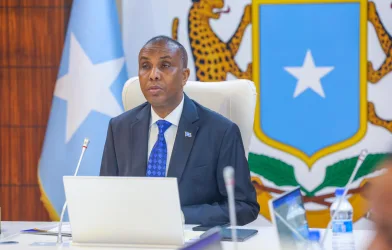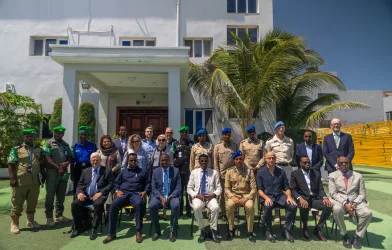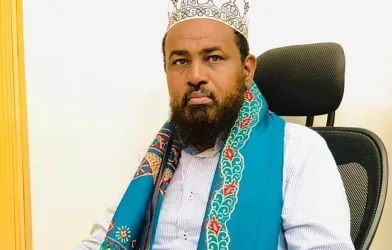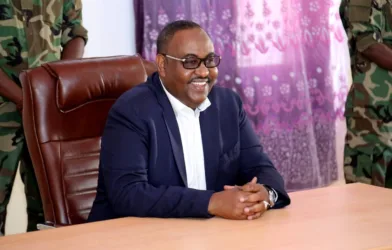
Drought is pounding on the Horn of Africa’s doors. Millions of people in Ethiopia, Kenya, and Somalia are starving and fleeing their homes. Droughts have resulted in human deaths, large-scale agricultural failure, livestock deaths, water shortages, malnutrition among young children, and the spread of infectious diseases. According to a recent Save the Children international survey of more than 12,000 people from 15 of 18 regions across Somalia, 70% of households do not have enough food to eat, 60% of households reported at least one family member losing their source of income, 1/3 of households reported at least one person going without food for more than 24 hours, and 700,000 camels, goats, sheep, and cattle died from drought-related causes in two months.(Figures, 2022).
What are the pressing concerns about the current Somali drought?
Droughts are not new in Somalia, but the alarm is very high for now. Somalia has suffered three major severe droughts in the past decade, commencing in 2011, 2016 and 2021 According the United Nations, 3.7 million people have experienced food insecurity at a crisis level in 2011, meaning they didn’t have enough to eat. According to Daniel G. Maxwell and Nasir Majid’s book “Famine in Somalia: Competing Imperatives, Collective Failure: 2011-2012,” between October 2010 and April 2012, 258,000 people faced excess mortality, including 133,000 children under the age of five, while 3.3 million people required immediate life-saving assistance, totaling 4 million people in crisis.
However, the situation has changed; droughts are no longer the only contemporary issues in Somalia; the Somali community is also dealing with other opportunistic calamities, the most significant of which being:
- Inflation.
In all parts of Somalia, including Somaliland, rising food prices are alarming. The consumer price index in Somalia grew to 6.84% in January 2022, up from 5.67 % 2021, according to the Somali national bureau of statistics. In January 2022, the rate of inflation jumped to 11.63%, according to the data. The graph below depicts the monthly inflation rate for each group (Somalia National Bureau of Statistics CONSUMER PRICE INDEX ( CPI ) November 2021, 2021).

Source: Somalia’s National Bureau of Statistics.
The situation in the autonomous region of Puntland is the worst because of the government’s recent loss of the Somali shilling and increased taxation, as well as continuous difficulties in the Bossaso port caused by Dubai-based multinational Emirates firm DP World and its partner P & Ports, which has tightened the import and export of goods in the port.
Even though consumers are experiencing an increase in the price of basic food items, in October 2021, the Somaliland Ministry of Planning and National Development reported that inflation had remained positive for the previous six months, peaking at 0.9% in May 2021. The graph below depicts monthly headline inflation in Somaliland and its primary components during the previous 6 months.

Source: Somaliland Ministry of Planning and National Development-Central Statistics Department (CSD).
- COVID-19.
Seven out of ten Somalis live below the poverty line. Before COVID-19, Somalia’s economy was steadily recovering. Economic growth was estimated increased rate of 2.9% in 2019 and projected to grow 3.2% in 2020 (World Bank. 2020. Somalia Economic Update, June 2020: Impact of COVID-19 – Policies to Manage the Crisis and Strengthen Economic Recovery). (Region, 2021).
Somalia is heavily dependent on importation for consumption and capital goods. The lockdown, the limited flow of remittances from the Somali diaspora, the restricted movement of goods and shocks for both supply and demand of goods around the world have negatively impacted the Somali economy. According to a World Bank assessment of COVID-19’s economic impact in Somalia, GDP will likely decrease by 2.5 % in 2020, after growing at 2.9% in 2019. (Figure 1).
Figure 1: GDP growth in Somalia, 2013-2020.

Sources: IMF and World Bank staff estimates and World Bank, Global Economic Prospects
- Political rigors and multi-stage elections.
Somali politics has been hit and run over the last two years due to disagreements over the election process. The current president is overdue for more than one year. Delayed elections have caused the government to turn a blind eye to the current drought. Government authorities in all areas are only concentrating on elections and strengthening their political wills/powers. This has never been a period of previous droughts. The government used to nominate a drought committee, mobilize local resources, produce drought appeals and call on humanitarian organizations to focus on drought response activities, but this does not exist at present.
- Funding gaps (aid fatigue).
Donor interest in funding Somalia is shrinking. The United Nations and humanitarian partners have released the 2022 Humanitarian Response Plan (HRP) for Somalia, which is currently experiencing its third consecutive failing rainy season. In 2022, an estimated 7.7 million Somalis will require humanitarian aid and protection, a 30% increase in only one year. The HRP for 2022 aims to raise close to US$1.5 billion to help 5.5 million of the Somalis most vulnerable people. Most humanitarian organizations are complaining about funding gaps, while some of them are closing their offices and leaving the country due to funding gaps. This will negatively impact households impacted by droughts who rely on humanitarian assistance.
What are the lasting solutions to the devastating droughts in Somalia?
Humanitarian assistance is no longer seen as a solution to the droughts and other disasters (both natural and man-made) around the world; it remains only for life-saving and short-term assistance. Somalia needs to receive long-term and sustainable assistance that results in reduced effects of disasters and sustained community food security and other basic household needs.
Alarming people after a tragedy is a primitive way of saving lives and assisting disaster-stricken communities. This isn’t what we should be doing. Instead, we should be focusing on building community resilience.
This article criticizes sustained humanitarian assistance or aid and presents four major durable factors for bringing lasting solutions to the effects of droughts and other natural disasters in Somalia:
- Resilience-building.
It’s time to shift the focus from humanitarian aid to developing resilience among the Somali community’s most vulnerable members. VSO defines resilience as: “The capacity of an individual, household, community or system to anticipate, absorb, and recover from shocks and stresses without compromising long term sustainability”. The Future is a Choice, an Oxfam Framework for Resilient Development, offers three categories of resilience ability: absorptive, adaptive, and transformative capacity. These three capabilities must be strengthened to produce resilient development outcomes, or the achievement of rights and well-being in the face of shocks, stressors, and uncertainty.
- Laying a premium on social protection and safety nets.
Over the last decade, humanitarian cash transfer programming has been concentrated in Somalia; however, while this has saved lives in the short term, it has not contributed to the community’s long-term resilience. Social protection and safety nets provide long-term, reliable, predictable, and regular transfers, thus building community resilience in the long run. Developed countries spend more than 30% of their GDP (gross domestic product) on social protection and safety nets, while middle and low-income countries spend less than 1.5% of their GDP on social protection and safety nets. The Somali social protection policy (SSPP) is now in place, and it is a good starting point to take the lead. From this point onwards, the government of Somalia needs to design and start piloting social protection and safety net projects to understand challenges and which social protection schemes have priority.(The Federal Government of Somalia, 2019).
- Strengthening capacity of government institutions.
Somali government has not been fully functioning in the past two decades, because of this, government institutions have lost capacity to manage public functions. Even though there has been a strong government back to 1990, United Nation organizations and international/local NGOs have come up with momentum and are implementing some of the government activities in the past two decades, including delivery of basic services and security. Although there is very limited commitment for government institutions in all parts of Somalia, it is now time to concentrate on building the capacity of government institutions to take over the lead role in both developmental and humanitarian actions and plans. The key strengthen areas are policies, systems building, governance structures, learning and innovations at all levels.
- Empowerment and skill development for young people.
Youth unemployment is a major problem facing Somalia. More than 70% of the Somali population is under the age of 30 years. They can contribute positively or negatively to the country’s long-term developmental goals. The younger generation in Somalia lacks all the necessary skills for employment, whether they are hard skills or soft skills. To overcome this, governments and other development actors need to focus on skills development with a concentration on vocational/technical skills, life skills for success, critical thinking, and social skills. Lack of gainful employment can cause aggravation and demoralization, leading them to indulge in illegal acts like smuggling or joining militant groups.
References.
Figures, K. E. Y. (2022). Save the Children Somalia Drought rapid needs assessment – Preliminary findings.
Region, B. (2021). COVID-19 Socio- Economic Impact Assessment Report.
Somalia National Bureau of Statistics CONSUMER PRICE INDEX ( CPI ) November 2021. (2021). November
The Federal Government of Somalia. (2019). Somalia Social Protection Policy. Ministry of Labour and Social Affairs Somalia, 1–56. https://www.alnap.org/system/files/content/resource/files/main/MoLSA-Somalia-FINAL-min.pdf
The World Bank. (2020). Somalia Economic Update. Somalia Economic Update, 5. https://doi.org/10.1596/34239.
Mohamud Isse Yusuf: A humanitarian worker based in Somalia focusing on social protection and safety nets.
Horseed Media







